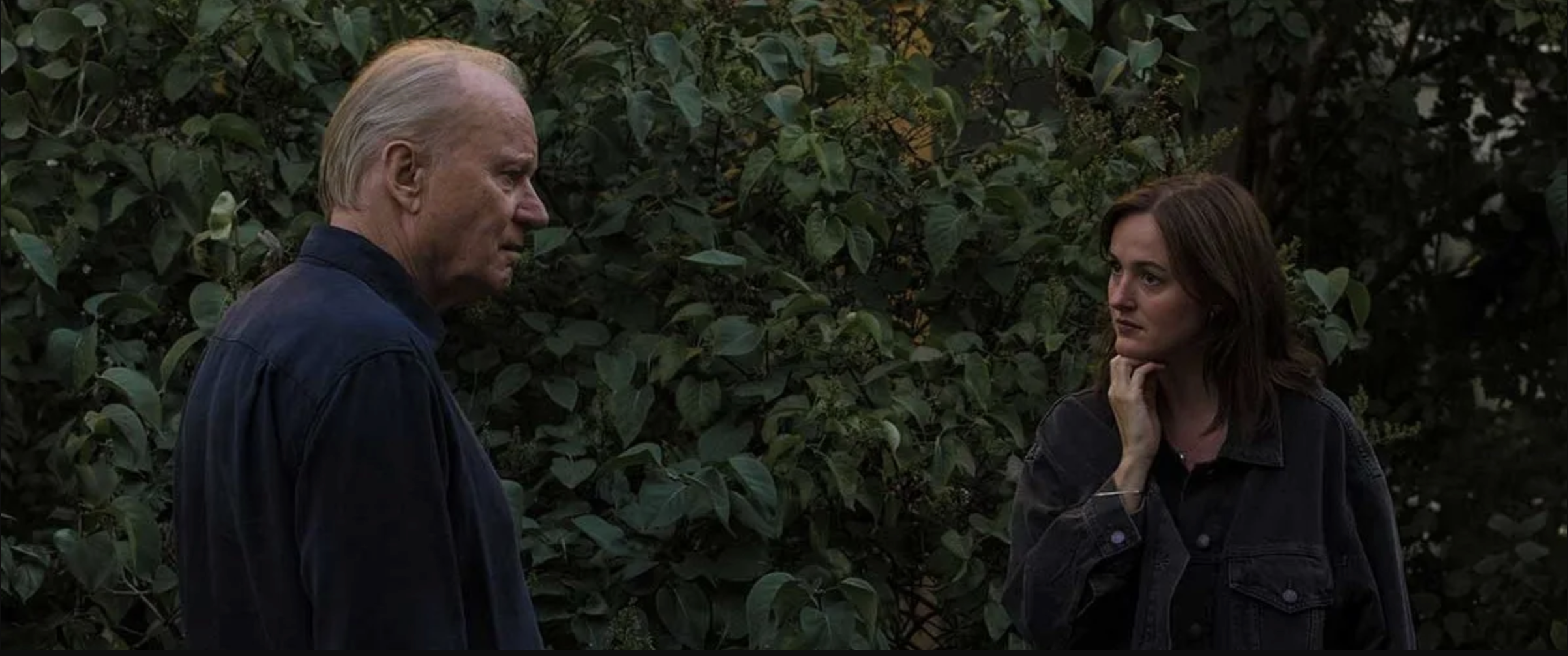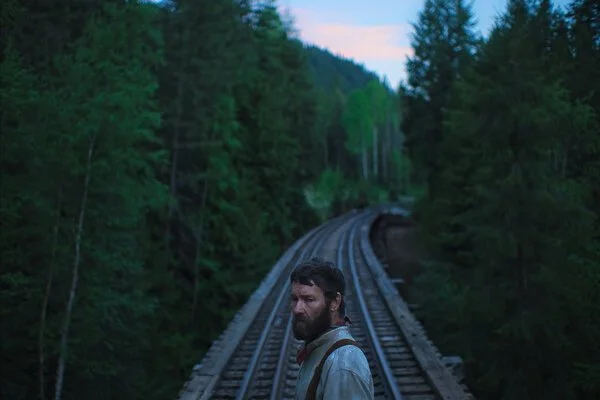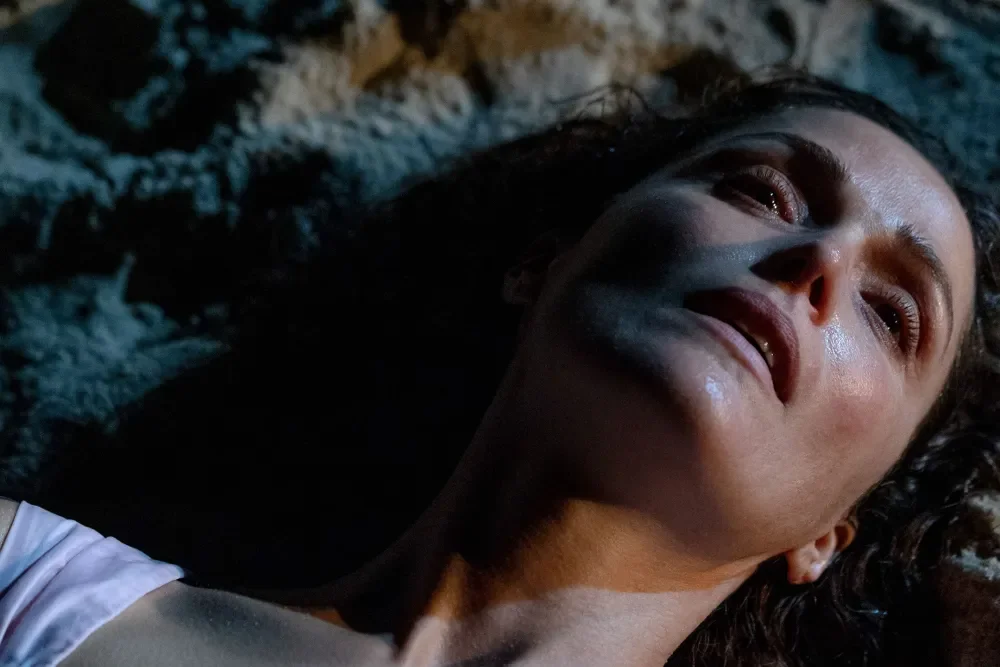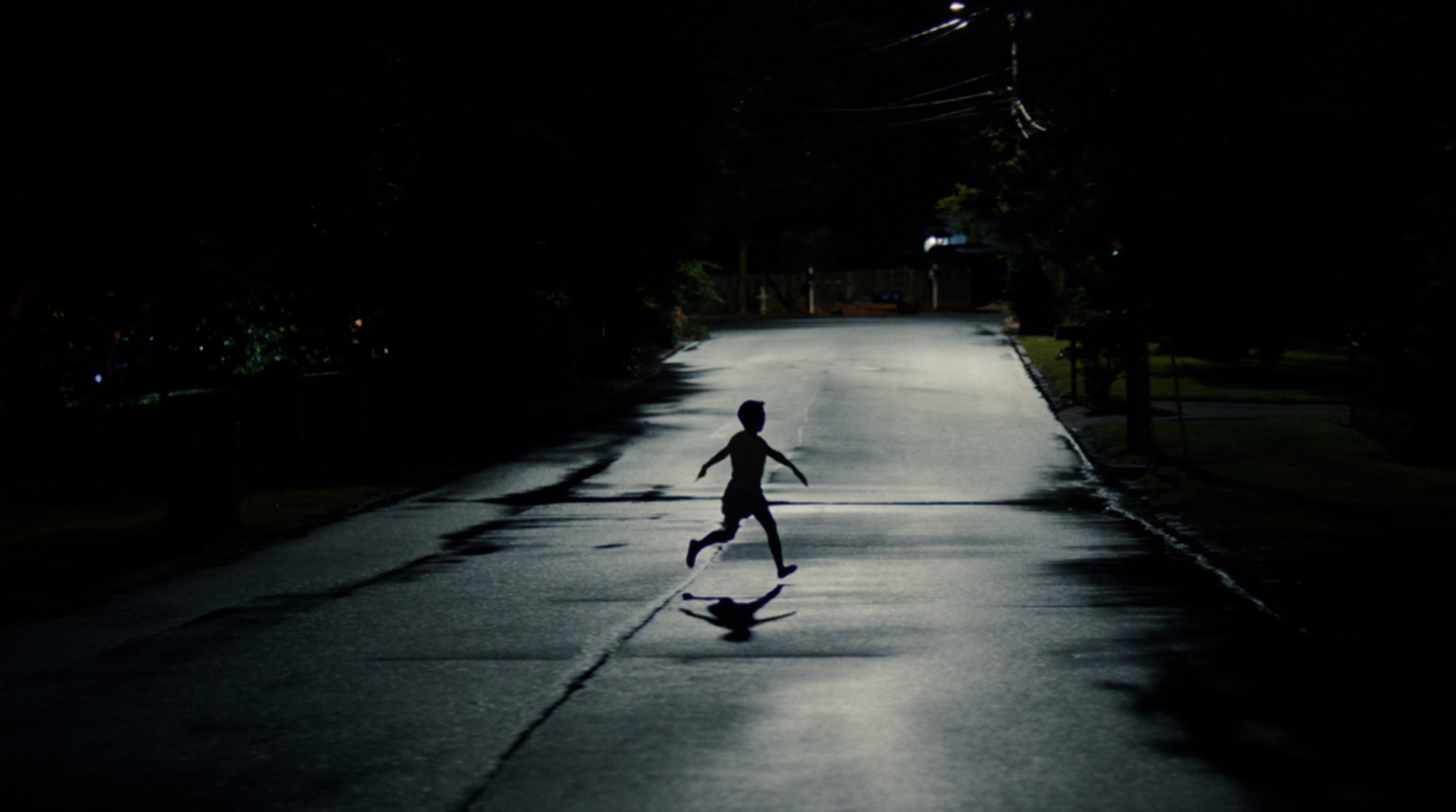HAMNET
Directing: A-
Acting: A+
Writing: B+
Cinematography: A-
Editing: A-
The final sequence in Hamnet involves the staging of William Shakespeare’s play Hamlet, with Shakespeare himself (Paul Mescal) playing the part of the Ghost, and Shakespeare’s wife, Agnes (Jessie Buckley), at the front of the floor crowd crunched right up against the stage, having made an unannounced visit to view the play. This is a scene with a lot of extras, thankfully none of them computer-generated, and the staging—if you’ll pardon the pun—is superb. It’s not often that even the performances of the extras in a scene is impressive, and this is a testament to the directing skill of Chloé Zhao (who also directed and co-wrote the Best Picture-winning 2020 film Nomadland). Agnes becomes deeply invested in the story unfolding onstage in front of her, but so does this entire crowd, who at one point take a subtle collective action as led by Agnes, which is one of the most moving moments in the film. We do not see any of William Shakespeare’s productions up until this point, and this sequence alone makes Hamnet worth seeing, and it’s worth waiting for.
It’s also worth noting that Zhao also co-wrote Hamnet, along with Maggie O’Farrell, author of the 2020 novel of the same name—and that this story runs with a lot of historical conjecture, such as the idea that Hamlet is at all directly tied to the death of Shakespeare’s one son: Hamnet. Indeed, we are told with an opening title card that in their time, the names “Hamnet” and “Hamlet” were virtually interchangeable. This film literalizes this notion when, upon first seeing the play start, Agnes shouts at the actors “Don’t you dare say my son’s name!”
As O’Farrell and Zhao tell it, The Tragedy of Hamlet ultimately served as a way for William and Agnes to come to an understanding regarding the grieving of their son. This is reportedly the product of speculation, but in the film, it is very effective. I cam to this film armed with tissues, and it did not disappoint on that front—although I will admit to expecting to weep a bit more than I did. I still wept plenty.
The focus of Hamnet is never truly on the title character, but on how his life and death of his parents, one of whom is arguably the most famous artist ever to live in the Western World. Long before any of the children are born—and there are three; an older daughter, Susanna (Bodhi Rae Breathnach), and a pair of fraternal twins, Hamnet (Jacobi Jupe) and Judith (Olivia Lynes)—the story focuses on the love story between William, and Agnes, the local orphaned child with a reputation for being a witch. Hamnet only leans slightly into the witchiness of Agnes, with her insistence that she can see visions by touching people’s hands, or her deep, generational connection to the forest. She even gives birth to Susanna by herself in the woods. This, of course, is well after William and Agnes secure their betrothal, in the face of certain lack of permission by either William’s parents or Agnes’s guardian, by simply getting pregnant.
I find myself wondering how these plot threads play out in the novel, as although the film clocks in at a quite-reasonable 125 minutes, some of these details felt a little bit rushed to me. Most notably, the contempt this couple’s parents or guardian have for their beloved, which seems to have dissipated on the part of William’s mother, Mary (Emily Watson), within a couple of scenes—as soon as the narrative jumps forward to the birth of Susanna. As for Agne’s stepmother, Joan (Justine Mitchell), we see her very briefly in only a few scenes, and when Agnes much later says to her very coldly, “You are not my mother, and you never were,” we have seen so little of Joan that the nastiness feels unearned.
The narrative also jumps forward from the twins’ infancy to their age at around ten, and we do not get a lot of time getting to know any of them, either—though we do get to know Hamnet himself slightly better than the others. Just enough, indeed, to get a sense of how much these children mean to their parents. Jessie Buckley’s performance of maternal grief is so stunningly visceral that I found myself wondering if she has children of her own (she has one), and Paul Mescal has kind of already made a career out of tortured interiority. These two do not express grief in the same way, and in this telling at least, it takes the writing of Hamlet to bring them back around to each other
Hamnet is more than anything a love story, and that is indeed where it shines. The performances are phenomenal, especially those of Buckley and Mescal, but really across the board—right down to the aforementioned extras in the theater watching Hamlet in the final sequence of the film. And although I’m sure it would help deepen the appreciation, you need not have a detailed knowledge of Shakespeare’s work to appreciate this story, or indeed even how Hamlet is used therein. Shakespeare himself was well known for writing “a play within a play,” which is effectively what is happening here—quite similarly using the play as subtext. By the end, though, it becomes the text, in a way deftly executed, so that even with the quibbles I had with the plotting, I felt emotionally cleansed.
Agnes is deeply moved, and so are we.
Overall: A-










